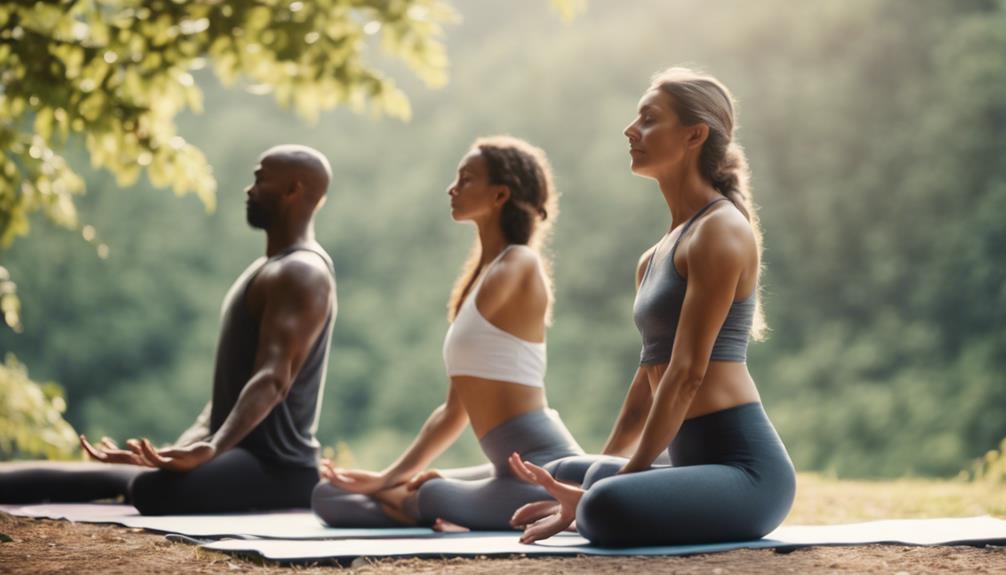When Did Yoga Begin?
Yoga is a practice that has captivated hearts and minds for thousands of years. So, when did yoga begin its transformative journey? The origins of yoga date back to ancient times, blending spirituality, philosophy, and physical well-being into a harmonious lifestyle. This article will explore the fascinating timeline of yoga, shedding light on its evolution from ancient roots to its vibrant modern-day practices.
Unfolding History: When Did Yoga Begin Its Journey?
The origins of yoga are often traced back to the Indus Valley Civilization, which thrived around 2500 BCE. Archaeological discoveries have revealed seals and artifacts depicting figures in meditative poses, suggesting that early forms of yoga were practiced in this ancient society. The term "yoga" itself is derived from the Sanskrit word "yuj," meaning to unite or join. This signifies an important aspect of its practice: the integration of body, mind, and spirit. As we delve deeper into the timeline, we discover that yoga’s roots are entwined with the spiritual teachings and philosophies that emerged in the early Vedic texts.
By the time we reach around 1500 BCE, the Vedic scriptures, including the Rigveda, began to emerge. These texts introduced the concepts that would form the philosophical backbone of yoga. The ancient sages and seers, known as Rishis, articulated ideas surrounding meditation, breath control, and ethical living, laying the groundwork for what we now recognize as yogic philosophy. The Upanishads, written around 800-400 BCE, further expanded on these concepts, focusing on the inner journey of self-realization and the connection between the individual and the universe.
Fast forward to the 2nd century BCE, when Patanjali composed the "Yoga Sutras," a seminal text that systematized yoga philosophy into a coherent framework. Patanjali’s teachings on the Eight Limbs of Yoga (Ashtanga) provided a structured approach to practice, emphasizing ethical conduct, meditation, and physical postures. This marked a pivotal moment in the history of yoga, as it began to gain recognition beyond the realms of spirituality, evolving into a comprehensive lifestyle that integrates physical health and mental clarity.
From Ancient Roots to Modern Mat: The Yoga Timeline!
As we journey through history, the influence of yoga expanded throughout India and beyond. By the time we reach the medieval period, various schools of thought emerged, each contributing unique interpretations and practices. The Hatha Yoga school, for instance, began to develop during the 11th to 15th centuries CE, focusing on physical postures and breathing techniques to prepare the body for meditation. This period saw the creation of numerous texts, such as the "Hatha Yoga Pradipika," which detailed specific practices aimed at achieving physical and spiritual liberation.
The colonial era in the 19th and early 20th centuries marked a significant turning point for yoga. As Western interest in Eastern philosophies and practices grew, yoga began to transition from its traditional roots into a more accessible form for a global audience. Pioneers like Swami Vivekananda played a crucial role in introducing yoga to the West, emphasizing its mental and physical benefits. This led to the establishment of yoga schools and the popularization of asanas (postures) as a form of exercise, paving the way for the modern yoga movement.
Today, the question "When did yoga begin?" often elicits a myriad of responses, as yoga has evolved into an eclectic practice that encompasses a wide range of styles and traditions. From Hatha and Vinyasa to Yin and Kundalini, the diversity of yoga practices caters to various preferences and lifestyles. As we see yoga flourishing in studios, gyms, and homes globally, it serves as a reminder of its ancient beginnings—a practice rooted in self-discovery and connection that continues to inspire individuals from all walks of life.
Reflecting on Yoga’s Timeless Impact
In conclusion, the journey of yoga is as rich and diverse as the individuals who practice it. From its ancient origins in the Indus Valley to the modern-day mats of yoga studios worldwide, the question of when did yoga begin reveals a tapestry of history filled with spiritual and philosophical significance. Embracing yoga not only connects us to our roots but also empowers us to cultivate mindfulness and well-being in our daily lives. Whether you’re a seasoned yogi or just beginning your journey, the vibrant legacy of yoga invites everyone to explore their own unique path to harmony.
